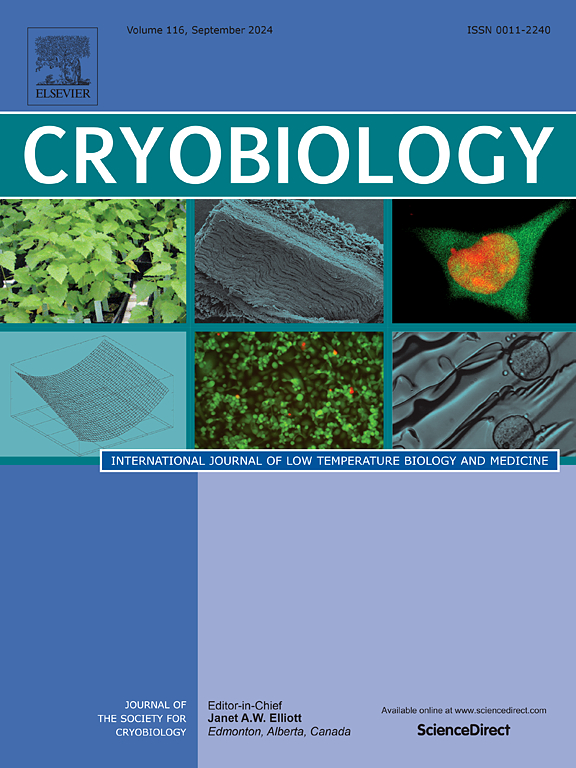甘油提高了冷冻保存的鞭藻的活力。
IF 2.3
3区 生物学
Q2 BIOLOGY
引用次数: 0
摘要
群鞭藻Salpingoeca rosetta是研究多细胞起源的一个可处理的模型系统,但该物种的长期储存策略尚未得到测试。在这项研究中,我们探讨了冷冻保存的每个阶段(冷却、长期储存、恢复),以确定恢复罗塞塔葡萄球菌和共培养细菌细胞的最佳方案。二甲基亚砜(Me2SO;通常被称为DMSO),目前的冷冻保护剂(CPA)标准,证明在类似浓度下比甘油更差。用5%的CPA处理的样品显示出最差的回收率。我们的研究结果表明,15%的甘油是最有效的CPA对玫瑰葡萄球菌和太平洋紫锥虫。我们还确定,超低温冷冻机可以足够的短期储存。我们建议15%的甘油和液相氮作为罗塞塔菌培养物的标准冷冻保存方案,并作为测试其他鞭毛类和异养原生生物长期储存策略的起点。本文章由计算机程序翻译,如有差异,请以英文原文为准。
Glycerol improves the viability of a cryopreserved choanoflagellate
The colonial choanoflagellate Salpingoeca rosetta is a tractable model system for studying the origins of multicellularity, but long-term storage strategies for this species have not been tested. In this study, we probed each stage of cryopreservation (cooling, long-term storage, recovery) to identify the optimal protocol for recovery of S. rosetta and co-cultured bacterial cells. Dimethyl sulfoxide (Me2SO; commonly referred to as DMSO), the current cryoprotective agent (CPA) standard, proved to be worse than glycerol at comparable concentrations. Samples treated with either CPA at 5 % showed the poorest recovery. Our results identified 15 % glycerol as the most effective CPA for both S. rosetta and Echinicola pacifica. We also determined that ultra-low temperature freezers can be sufficient for short-term storage. We propose 15 % glycerol and liquid phase nitrogen as the standard cryopreservation protocol for S. rosetta cultures and as a starting point for testing long-term storage strategies for other choanoflagellates and heterotrophic protists.
求助全文
通过发布文献求助,成功后即可免费获取论文全文。
去求助
来源期刊

Cryobiology
生物-生理学
CiteScore
5.40
自引率
7.40%
发文量
71
审稿时长
56 days
期刊介绍:
Cryobiology: International Journal of Low Temperature Biology and Medicine publishes research articles on all aspects of low temperature biology and medicine.
Research Areas include:
• Cryoprotective additives and their pharmacological actions
• Cryosurgery
• Freeze-drying
• Freezing
• Frost hardiness in plants
• Hibernation
• Hypothermia
• Medical applications of reduced temperature
• Perfusion of organs
• All pertinent methodologies
Cryobiology is the official journal of the Society for Cryobiology.
 求助内容:
求助内容: 应助结果提醒方式:
应助结果提醒方式:


